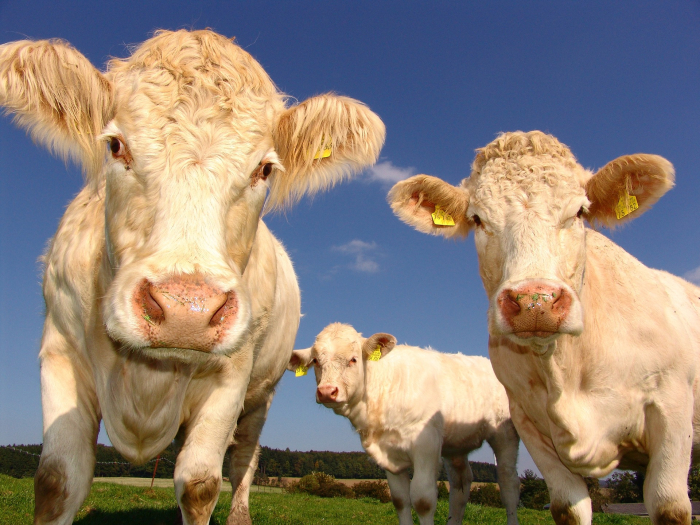Finch Consulting Senior Consultants Melvin Sandell and Dr Stephen Cowley provide an overview of the key issues for the Expert Witness when instructed to give factual and opinion evidence, in civil and criminal matters involving agriculture.
Agriculture remains the most dangerous industry in the UK with a death rate per 100,000 workers of c.9.21 compared to the construction rate of c.1.31. Those involved in the industry are exposed to a broad spectrum of risks ranging, for example, from exposure to hazardous chemicals including asbestos, maintenance and operation of powerful machinery, close working with large and powerful animals, and manual handling to long periods of lone and sometimes isolated working and work in confined spaces. Decreasing incomes and fewer people entering the industry in recent years has meant that agricultural workers are on average 59 years of age, and now do more to maintain old buildings and equipment resulting in increased working at height, longer hours and generally poor working conditions.
In general, only the most serious incidents and accidents are reported to the regulators. These often involve life changing injuries and fatalities among farmers and their workers. The ‘family’ farm is still the mainstay of the industry and resident children can be exposed to the hazards with rare but often catastrophic results. Members of the public are also at risk, and the lack of understanding of agriculture results in conflict and exposure to risk around livestock or machinery. Difficulties with the public are increasing as more people are visiting the countryside.
During both proactive and post-incident investigatory work, Finch has often found that even in major undertakings, knowledge of how and when the legislation translates to the industry can be poor. Because most farms are small, family enterprises with little outside influence, working practices both good and bad are handed down and unsafe working processes are accepted as the norm. This is also the case with health issues; manual handling, exposure to dusts, noise and vibration limits are often paid lip service if considered at all.
Vehicles and machinery tend to be large and powerful and accidents involving them are invariably serious. Because of the nature of the work, equipment has large, unguarded sections with sharp, moving blades, augers and crushing hazards. Time pressures and costs are often cited as the reasons for the poor maintenance and unsafe working practices that are at the root of many accidents e.g. working on running equipment, failing to repair brakes and using machinery incorrectly or outside its safe operating limits.
Over familiarity with large livestock such as cattle and deer are often behind fatalities and serious injuries to farmers. Most cattle are reasonably benign, and fatalities are often related to them behaving unpredictably due to fright or unfamiliar circumstances. Certain cattle breeds and cows with calves at foot can be actively aggressive to people. Some bull breeds are not allowed in fields with footpaths and cows with calves need to be carefully assessed before being allowed there. The fear of dogs will trigger the livestock ‘fight or flight’ response and members of the public have been attacked and sometimes killed by cattle when they have tried to protect their dog.
Smaller livestock including sheep, pigs and poultry less commonly cause physical harm but naturally carry a variety of transmittable, zoonotic diseases that can cause serious illness. E Coli, campylobacter and cryptosporidiosis are examples of endemic disease and these can be picked up and transmitted easily where hygiene conditions are poor. Hygiene and animal health are particularly important where members of the public encounter livestock for instance at agricultural shows or open farms.
Farmers will often carry out all maintenance of their premises. High falls from and into buildings are common due to lack of risk control and this is sometimes exacerbated by inappropriate use of tractors, telehandlers, potato boxes etc. to gain access to height. Home-made cattle races and buildings are sometimes poorly designed and constructed and, whilst not a danger in themselves, are often not safe in use or during maintenance. Many buildings are old with poorly maintained asbestos roofing and cladding. Falls from silage clamp edges and oxygen depletion in slurry stores are common hazards on livestock and dairy farms and are rarely controlled during work.
Storage and use of toxic, flammable, and potentially explosive substances are common. The potential harm from modern animal and crop treatments can vary from benign to carcinogenic and training for the use of the right equipment for the substance is vital to protect the user and those around it. Vehicle fuels and lubricants, paints, heating gases, fodder and bedding stocks are all potentially flammable if not stored and used correctly, whilst certain fertilisers, straw, grain and wood dusts can cause explosions if not managed and stored correctly.
Finch is regarded as one of the leading providers of expert services, including engineering and health and safety expert witness services, dealing with both criminal prosecution and defence as well as personal injury claims relating to occupational fatalities and injury, having produced more than 10,000 reports in connection with these claims over the years.
If you would like further information please contact Melvin Sandell or Dr Stephen Cowley.

